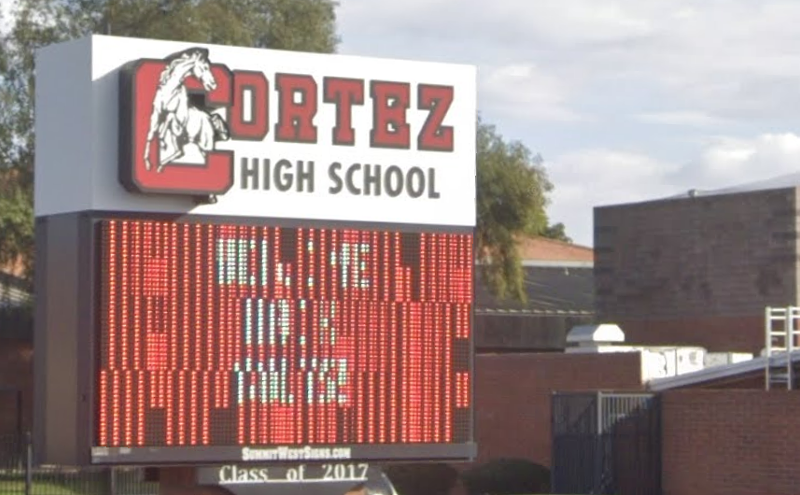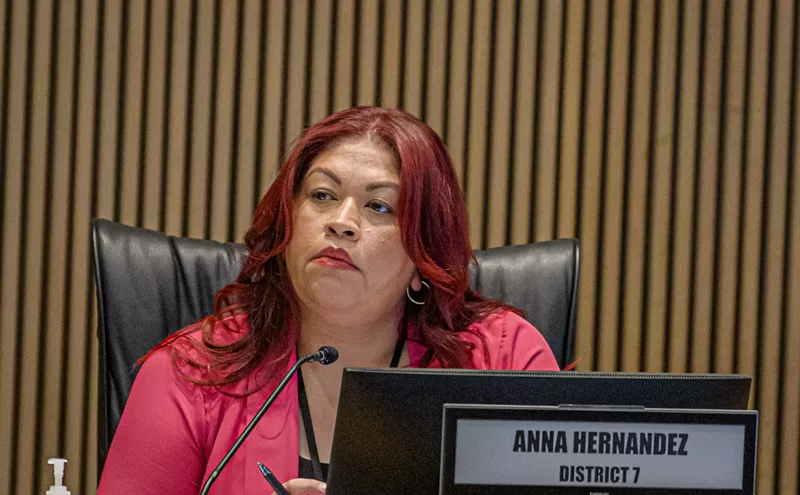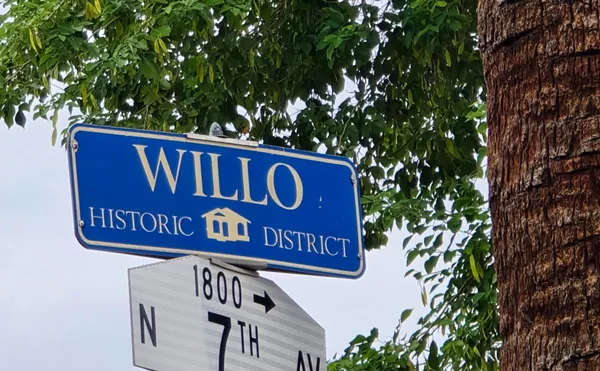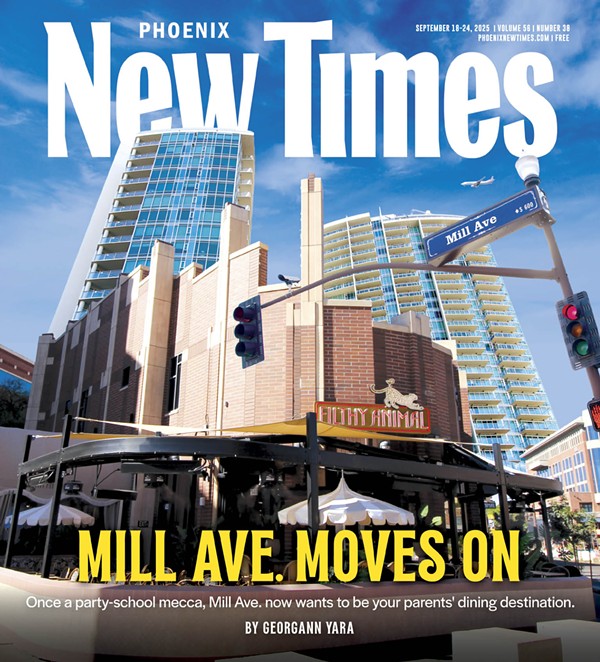Once upon a time, there was a city. It was not the largest city, or the smallest. It was not the richest or the poorest. But this city had a reputation, nonetheless. It was known throughout the land as dry and inhospitable -- heated to unimaginable temperatures for several months of the year, ruled by a witch of a governor and a cruel sheriff, a cultural wasteland. The people of this city knew the truth. Yes, upper management could be rough, and at first the landscape wasn't easy on the eyes, but past the strip malls and the cookie cutter subdivisions, a wonderful metropolis burgeoned: bartenders poured the craftiest of cocktails, world-class chefs cooked, there were sports teams to cheer for, boutiques to shop at, and clubs where you could dance the night away.
Once a year, the kind-hearted souls at the city's alternative newsweekly gathered the finest of what the place had to offer, presenting it in the hallowed pages of a book called the "Best of Phoenix." This year's edition features "Tales of the City" -- true stories told and legends explained.
Our chapter on politics, art and culture begins with an essay by Tom Zoellner.
See also: Read all of the Best of Phoenix 2014 essays
See also: Best of Phoenix 2014
Once upon a time in Phoenix, I had no capacity to wonder how there came to be a bridle path on the side of Central Avenue and why it looked as goofy as the severed half of an airplane fuselage that had been mounted over the ice skating rink at Metrocenter or some of the sheet-glass fortresses on the sides of Camelback Mountain or the rotating disc on top of the downtown Hyatt or the night garden of red bulbs blooming and dying every five seconds on top of South Mountain.
When I was a kid peering out the backseat windows of my father's 1977 Honda Civic at that graceful horsepath on Central Avenue, I assumed that it had always been there. Linear history means nothing to a child: The world is a collection of shapes without antecedents.
All I understood was that the spreading oaks and the tony estates and the shiny riding boots looked more "real" than anything else I saw around me, carrying as they did the look of a more mature America that I had seen in the storybooks I was gobbling up in the Acacia branch library in Sunnyslope.
What I didn't know then was that the faux-English district of North Central was about as fictional a creation as anything in those storybooks. And I certainly perceived nothing false about the Moon Valley neighborhood where I grew up in a cinderblock house that backed up to the rough of the 11th hole of a golf course.
My parents were penny-pinchers with no stomach for useless expenses, so we never did belong to Moon Valley Country Club. I rode my motocross bike to the clubhouse for egg salad sandwiches, however, and pretended I was a rich kid who belonged there. One Christmas -- the best of my life -- I received a set of kiddy clubs from Sears in a red plaid bag and developed the habit of taking them out to the tee box after sunset, when I might have a magical hour between the disappearance of the last legitimate golfers and the onset of night to skitter a ball toward the hole. Five strokes was my par. When I wasn't making elaborate headfirst baseball slides in the sand traps, I shouldered my little golf bag with authority and pretended I was a grown man: part of that mysterious world where they talked about stock trading and smelled of cologne and sometimes used rooms in the Hyatt below the Compass Room for a fascinating and then-scary activity with women that I had been told in elementary school went by many names, including screwing. Origins are shrouded to a child, only bright surfaces for guessing and wonder.
Though I had a hazy conception of dinosaurs and sailing ships and vanished Indians, history was an abstraction. The grass fairways of Moon Valley Country Club had seemed as permanent as the very foundations of the Earth. I could not have fathomed that it was all scraped out and planted eight years before I was born -- those were the days when Thunderbird Road was just like the farthest bleeding edge of North Scottsdale -- and that it took a ridiculous amount of water to keep the grass from dehydrating overnight. This came not from the canals but straight out of the municipal taps: the best, purest, most expensive water available.
What I didn't understand then was that recent technology had raised my strange city from the ground, just as aqueducts had poured water on Rome and the railroad had tickled the suburbs of London into being. Without our killer triad of recreational hydrology, the automobile, and air-conditioning, Phoenix would have always been a shabby agribusiness town -- think of a forlorn place like Yuma, with broken melons in the gutters. But the machines of the 20th century made it possible to drive 30 minutes to work listening to soft rock on KOY and go home to a chilled-air rancher tucked inside a square of Bermuda grass and a high fence of bougainvilleas. This described Moon Valley Country Club in the late 1970s, every bit as much a product of technology as Skylab.
"Arizona has become largely responsible for redefining the very term 'desert,'" said a report commissioned by the civic elite in those years. "Before 1950, a desert was widely perceived as a harsh, forbidding wilderness area incapable of supporting any considerable population. Today, a desert has become an appealing landscape, an attractive place to live, and a new kind of adult playground."
The truth was that an economy like Phoenix's depended on junkie logic -- it required an everlasting fix of more growth. Moon Valley suffered after the 2008 mortgage disaster, and the club found itself $6 million in debt and unable to pay its water bill. Membership plunged.
It didn't help that during the boom times, the management had an attitude like that of Judge Smails from Caddyshack: This is our club, not yours. Developer Jerry Tokoph bought the bank note at half-price and reportedly proposed a local version of a smash-and-grab: abandoning the golf course and filling in the fairways with asphalt and condominiums. Facing a decline of their property values (a fear of the primal sort around these parts), the Moon Valley Neighborhood Association passed the hat and raised $1.1 million to stop Tokoph from foreclosing on the note, even despite what former association president Phil Wendel acknowledged was a historically bad image of "arrogance and opulence" around the club. It's now owned by a Hong Kong hedge fund called C-Bons and managed by Borders Golf, and for the first time, the riffraff can play there without having to pay an outrageous annual fee. But it remains at the mercy of the desert water supply and the world capital markets.
This is, in its own way, a classic Arizona story: a reminder of the trap of futurist projections, the shakiness of humanity's contract with the Earth, and the impermanence of being. This is also adulthood: To see that water and credit are not limitless. And to understand there are beginnings and endings.
See also: Legend City: Best of Phoenix 2014
About the writer Tom Zoellner is an associate professor of English at Chapman University in California and the author of five nonfiction books. He used to cover Phoenix city government for the Arizona Republic. His great-great-grandfather was a cotton farmer who moved here in 1908 for love of the climate. Of his recent book A Safeway in Arizona: What the Gabrielle Giffords Shooting Tells Us About the Grand Canyon State and Life in America, New Times said it was "a gripping story that presents a side of the whole mess you're not likely to find elsewhere."
About the artist Sarah Hurwitz was born in Phoenix. She received a BFA in painting and ceramics from the University of Colorado in 2005 and a master's degree in painting from the University of Arizona and now works as lead artist for a design/build firm that makes large-scale interactive installations for children's libraries (see their cool stuff at www. burgeongroup.com). Hurwitz also occasionally teaches drawing at Paradise Valley Community College. She once traveled on a ship around the globe and has exhibited in Arizona, Los Angeles, Colorado, Chicago, and New York City. Her work mainly focuses on large-scale paintings and installations about detaching yourself from the duties of daily life by retreating to the fanciful environments of childhood imagination. She lives and works in downtown Phoenix with her baby boy, baby-daddy, and boxer. See more of her work at www.sarahhurwitz.com












